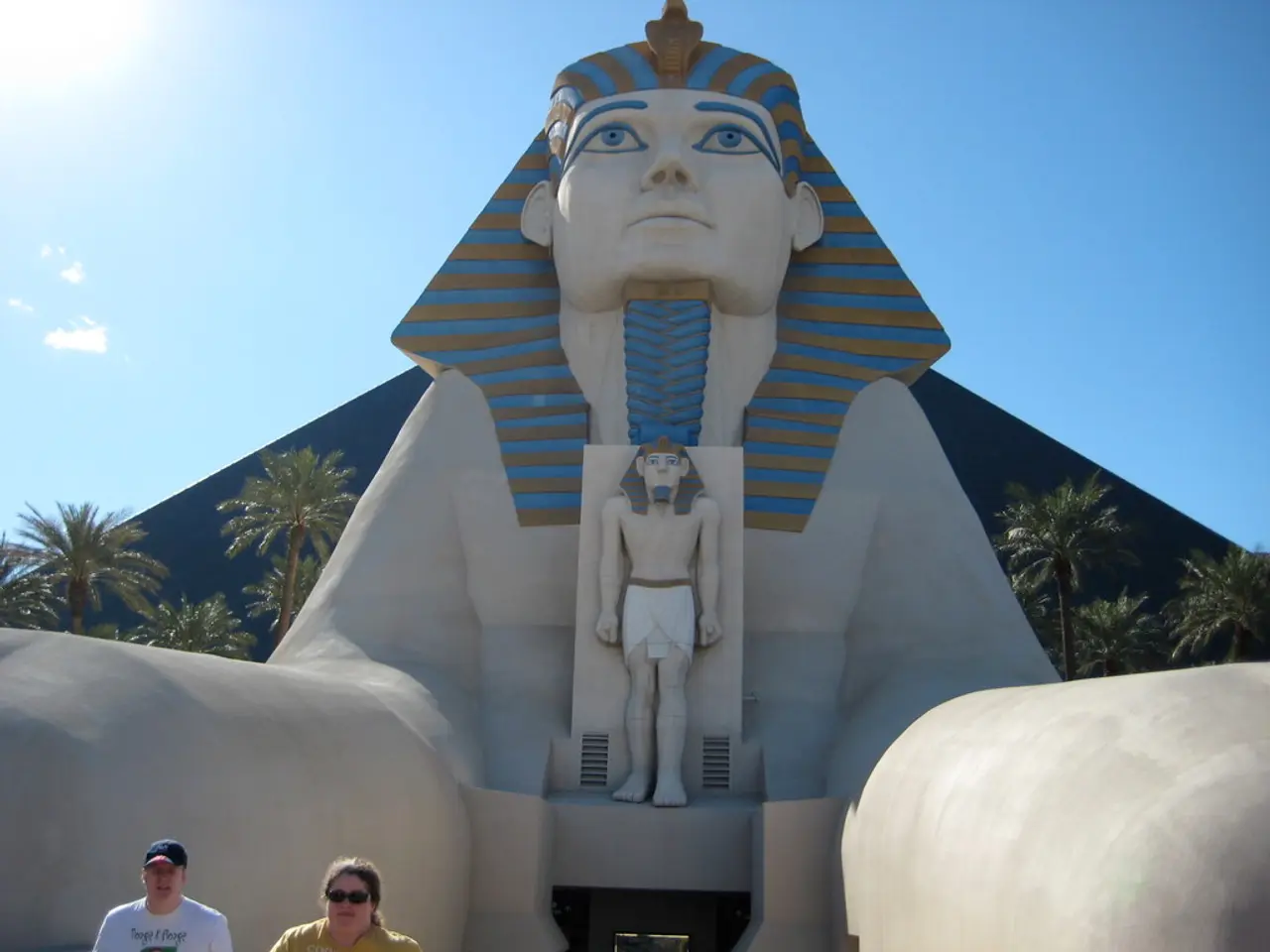Thirteen Deities from Ancient Egypt, Each with Captivating Origins Revealed
In the rich tapestry of Ancient Egyptian mythology, a plethora of gods and goddesses held significant roles, shaping societal values and beliefs. Among these, lesser-known deities like Bastet, Sekhmet, and Isis offer captivating stories that embody themes of protection, balance, transformation, and healing.
Bastet, initially a fierce lioness goddess of war, fire, and vengeance, embodied uncontrolled rage, much like her counterpart Sekhmet. However, as societal norms evolved, Bastet morphed into a gentler goddess, depicted as a cat or cat-headed woman. This transformation symbolised the shift from a symbol of royal power to one of personal guardianship, reflecting the value placed on domestic protection [1].
Sekhmet, though slightly better-known, represents uncontrolled rage and the destructive force of war. These two lioness goddesses illustrate the duality of divine power—both protective and destructive—highlighting the Egyptians’ understanding of balance and the complexities of natural and social forces [1].
Isis, though originally an obscure goddess, rose to great prominence as a magical healer, mourner, wife, and mother. She embodied devotion, healing, and protection, particularly in myths centered on resurrection and kingship. Isis's assistance to the dead king and her extension of help to all Egyptians underscored the importance of compassion and magic in social and religious life, underlining the evolution of Egyptian concepts of the afterlife and communal care [3].
These deities personified essential social values such as justice, protection, healing, and balance. They provided moral exemplars through their myths—Bastet embodying the balance between rage and restraint, Isis demonstrating devotion and healing, and Sekhmet the necessity of controlled power. They also served practical roles in everyday life, such as Bastet’s association with cats protecting granaries, which integrated divine influence into material well-being [1][3].
Ma'at's feather played a critical role in determining the fate of the deceased in the afterlife. Sekhmet was known as the goddess of war and healing, and was depicted as a lioness. Thoth was credited with possessing knowledge around magic and secrets that the other gods weren't privy to. Ra, the sun god, was considered the most important god in Ancient Egypt, believed to be born each morning in the east and die each night in the west [2].
Seth, a complex and powerful figure associated with chaos, storms, and disorder, was infamous for murdering and dismembering his brother Osiris. Ra, Isis's husband, was a central god, revered as the god of the afterlife, resurrection, and fertility [2]. Neith, the patroness of the city of Sais, was considered the creator of the world and the mother of Ra. Horus, often represented as a man with the head of a falcon, was the son of Osiris and Isis [2]. Hathor, the "Mistress of the West," greeted souls in the afterlife, and was a versatile deity, often depicted as a woman with cow horns or as a full cow [2].
Ptah, god of craftsmanship, was considered the creator of the universe and was highly revered in Memphis. The Egyptian pantheon is said to contain over 2,000 deities, each contributing to the rich and diverse mythology of this ancient civilization [2]. These lesser-known stories of gods like Bastet and Sekhmet illustrate the Egyptians’ nuanced understanding of duality and the moral lessons of balance, while Isis's rise from obscurity highlights the social importance of healing and protection. These gods enriched Egyptian mythology with complex attributes that reflected and shaped ancient Egyptian cultural values [1][3].
[1] Kemp, Barry J. "Ancient Egypt: Anatomy of a Civilization." Routledge, 2006. [2] Wilkinson, Richard H. "The Complete Gods and Goddesses of Ancient Egypt." Thames & Hudson, 2003. [3] Assmann, Jan. "The Search for God in Ancient Egypt: The Religion of the Pharaohs." Johns Hopkins University Press, 2008.
- The transformative journey of Bastet, from a fierce goddess of war to a gentle domestic protector, encapsulates the values of societal evolution and balance in Ancient Egyptian culture.
- Thoth, depicted as a god of magic and secrets, possesses a unique role in Ancient Egyptian mythology, revealing the intricate web of knowledge and wisdom that permeated their culture.
- Music and culture intertwined in the form of Hathor, the "Mistress of the West," who greeted souls in the afterlife and was associated with various artistic and musical aspects of ancient Egypt.
- Science and engineering were not alien concepts in Ancient Egypt, as evident in the reverence for Ptah, the god of craftsmanship and creativity, who symbolized the divine origins of vital skills and knowledge.
- The richness of Ancient Egyptian mythology is evident in the multifaceted roles of their gods, such as Neith, who served as the patroness of the city of Sais, the creator of the world, and the mother of Ra. These stories and beliefs reflect the depth of ancient Egyptian culture, blending elements of history, nature, and pop-culture.







